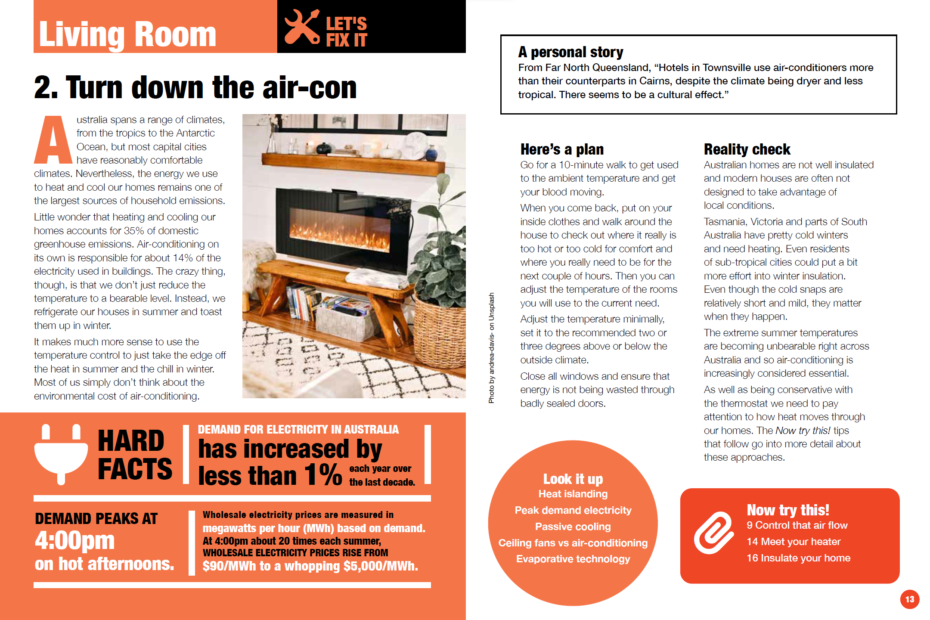Recent heatwaves have changed the way many of us think about Air Conditioning. It is now mandatory in Queensland Schools, for example. The Personal Story from Story Tree’s Jenni Cargill-Strong, says it all really.
Its hot enough for me to put the aircon on finally tonight as it’s not cooling down. In my townhouse, I have FOUR air-conditioners- which is a new experience! I don’t really like air con, so I only use it when the heat feels extreme. (Also for the environment and my bill.) I recently had to get them all serviced cos a rat died in one (ouch). Mark, the air con guy (Aether air) said to save power, switch it on when it’s not so hot eg at 28 degrees, rather than when it gets to 35 C. It uses the most energy when you turn it on and more if it’s very hot , but not cooling by increments or much on maintaining a steady temp. I used to turn it on and off. As well as closing windows and doors and sitting together in one cool room, an efficient way to stay comfortable and reduce your bill and impact, is to put the temp at about 27-28 degrees and also turn a fan on to enhance circulation and efficiency. This will reduce the humidity and the temperature, but won’t use as much power.
Jenni Cargill-Strong
See Jenni’s original post
Tip 2
Here’s the text from the introduction to Your Life Your Planet’s Tip 2
Australia spans a range of climates, from the tropics to the Antarctic Ocean, but most capital cities have reasonably comfortable climates. Nevertheless, the energy we use to heat and cool our homes remains one of the largest sources of household emissions.
Little wonder that heating and cooling our homes accounts for 35% of domestic greenhouse emissions. Air-conditioning on its own is responsible for about 14% of the electricity used in buildings. The crazy thing, though, is that we don’t just reduce the temperature to a bearable level. Instead, we refrigerate our houses in summer and toast them up in winter.
It makes much more sense to use the temperature control to just take the edge off the heat in summer and the chill in winter. Most of us simply don’t think about the environmental cost of air-conditioning.
Reality Check
I set my reverse cycle air conditioner / heater to 25 degrees by default, but adjust it to about 27 on hot days and 21 on cold days. 25 can seem pretty cool when it is in the mid 30s outside and versa. Many public spaces seem to reverse this logic and make rooms cold in summer and hot in winter. That is bad for our health and for the planet. Like many people I carry a blanket or jacket around in summer to deal with the air conditioning and make sure I can peel off a couple of layers indoors in winter.
My limited observations while travelling is that European buildings are generally well insulated and adjusted to a comfortable temperature, Asian buildings tend to overdo it a little for my liking. I do not travel much, though, so that is a very subjective observation based on selective anecdotal experience.
